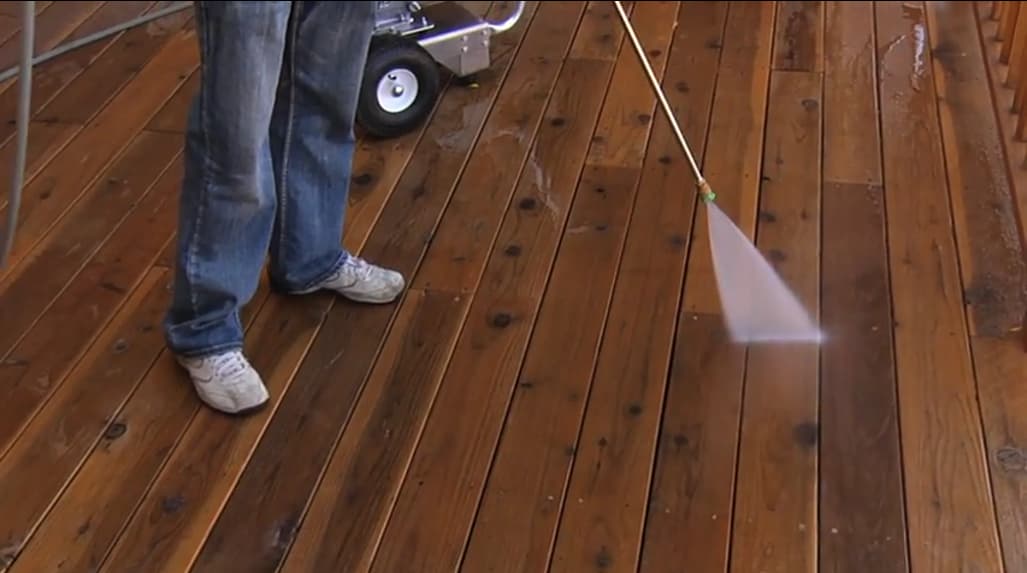
Pressure-treated wood is a popular choice for decks, fences, and outdoor furniture because of its durability and resistance to insects and rot. But when it gets grimy or moldy, many homeowners wonder: “Can I safely power wash pressure-treated wood?” 🧼
The short answer is yes — but only if done correctly. Power washing can rejuvenate pressure-treated wood and remove years of built-up dirt, algae, and stains. However, using the wrong technique can damage the wood, causing splinters, gouges, and even shortening its lifespan. 😬
Let’s break down the dos and don’ts of power washing pressure-treated wood, along with expert tips to make sure you clean without causing harm.
🔍 What Is Pressure-Treated Wood?
Pressure-treated wood is lumber that has been infused with chemical preservatives to resist rot, decay, and insect damage. This is often used in:
- Decks
- Fences
- Playground equipment
- Outdoor steps
- Landscaping borders
Despite its resilience, pressure-treated wood still needs regular cleaning to prevent mold, algae, and surface grime from building up.
✅ When Is It Safe to Power Wash Pressure-Treated Wood?
Power washing is generally safe when:
- The wood is older than 6 months (new pressure-treated wood needs time to dry and cure)
- You use a moderate pressure setting (1,500 to 2,500 PSI)
- You keep the nozzle at least 12 inches away from the surface
- You use a wide spray angle (25° or 40°)
- The wood is visibly dirty, moldy, or discolored
When done properly, power washing can restore the wood’s original color and prep it for sealing or staining. 🌟
⚠️ When to Avoid Power Washing Pressure-Treated Wood
Skip power washing if:
❌ The wood is less than 6 months old
❌ It’s already splitting, cracking, or deteriorating
❌ You’re using high pressure (>3,000 PSI)
❌ The surface is painted or sealed and you don’t want to strip it
Power washing soft or decaying wood can do more harm than good. It’s best to hand-clean these areas or replace them if needed.
🛠️ How to Safely Power Wash Pressure-Treated Wood
Follow these steps to clean pressure-treated wood without damaging it:
1. Prep the Area
- Remove all furniture, decor, or plants from the area
- Cover electrical outlets and nearby surfaces you don’t want wet
- Sweep off loose debris, leaves, and dirt
2. Choose the Right Pressure Washer Settings
- Use a pressure washer rated between 1,500–2,500 PSI
- Attach a 25° or 40° nozzle — avoid narrow, pinpoint spray tips
- Keep the nozzle 12–18 inches away from the surface
- Spray at a low angle, in the direction of the wood grain
💡 Start at the lowest pressure possible and work your way up only if needed.
Browse Amazon Here For Top Rated Power Washers And Accessories
3. Use Wood Cleaner or Deck Wash
For best results, apply a wood cleaner beforehand:
- Apply using a garden sprayer or detergent nozzle
- Let the solution sit for 5–10 minutes, but don’t let it dry
- This helps lift dirt and kill mold/algae
4. Rinse with a Consistent Technique
- Use long, even strokes following the grain
- Work in sections (e.g., 3–4 boards at a time)
- Keep moving — never linger in one spot too long
- Overlap slightly to avoid streaks
🌬️ Avoid gouging by maintaining consistent pressure and distance.
5. Let It Dry Thoroughly
After washing, allow the wood to dry for at least 48 hours before sealing, staining, or replacing furniture.
Waterlogged wood won’t absorb stains or sealers properly and may trap moisture, leading to rot. 🌤️
🧠 Expert Tips for Best Results
- Use a wood brightener after washing to restore the wood’s natural color
- Seal the wood once dry to protect it from future moisture damage
- Power wash once per year to keep buildup under control
- Test a small area first, especially if you’re unsure about the wood’s condition
❌ What Happens If You Use Too Much Pressure?
Using high pressure or a narrow nozzle can:
- Splinter the surface
- Raise the wood grain, making it rough
- Create grooves or gouges
- Strip away protective preservatives
- Shorten the wood’s lifespan
Always err on the side of caution. If it looks like your washer is “shaving” the wood, stop immediately. 😬
🔁 Alternatives to Power Washing
If you’re nervous about damaging your wood, consider:
- Soft washing with lower pressure and chemical cleaners
- Hand scrubbing with a stiff brush and wood cleaner
- Hiring a professional with experience in wood restoration
These methods take more time but can reduce the risk of damage.
🏁 Final Thoughts
So, is it safe to power wash pressure-treated wood? ✅ Yes — but only with the right approach.
Stick to moderate pressure, wide-angle nozzles, and keep your distance. When done properly, power washing can refresh your deck or fence, making it look almost brand new. 🌲✨
Just remember: it’s easier to add pressure than to undo damage. Take your time, be gentle, and your pressure-treated wood will thank you with years of clean, durable service. 💧🧼
Browse Amazon Here For Top Rated Power Washers And Accessories






